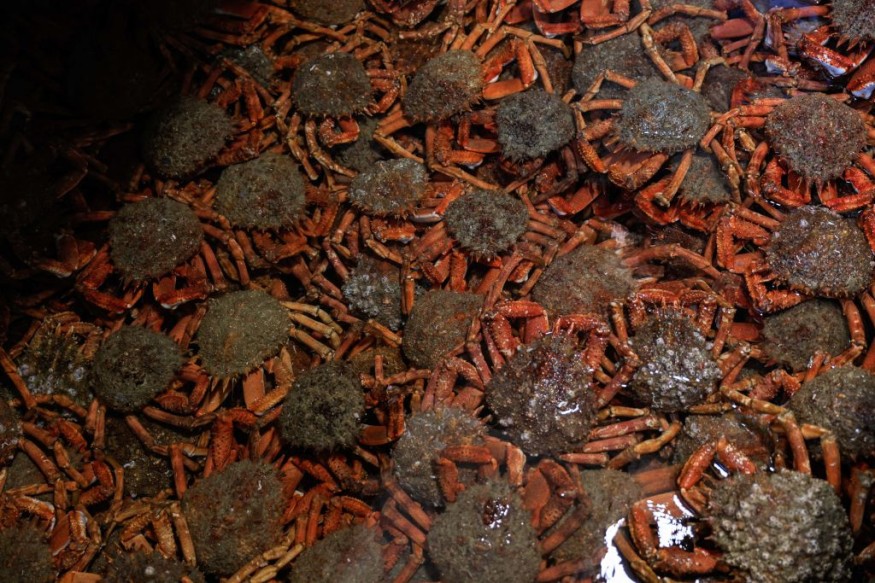
Scientists are currently investigating why thousands of giant crabs are piling up in the shallow waters off the Australian coast, forming as big as a tall person.
"These fascinating crustaceans are on a risky mission - to get bigger," according to The Conversation. While crabs are known to have the inability to grow bigger than they already unlike sof-bodied animals, they clump together in such big numbers to keep each other safe from hungry predators.
However, scientists and experts still have little knowledge about these fascinating creatures.
"Safety in Number"
Southern Australia's spider crabs (Leptomithrax gaimardii) are usually dispersed in deeper waters, but they have lately became more visible to humans when they congregate near shore in winter, and other times of year in some occasions.
Spider crabs are Victoria's largest growing spider crabs. According to Victorian Fisheries Authority, they can reach 16 cm across their carapace or shell, and 70 cm across their legs - although most are not this big.
Scientists currently believe that the crustaceans move in from deeper waters and gather to find 'safety in numbers' while they moult, shedding their old shells in a synchronised act which takes about an hour and stay together until their new hard shells form.
After a few weeks, the soft crabs are believed to return solidarily in the deeper waters littering their discarded shells.
Each winter in area of Blairgowrie and Rye piers, a regular giant spider crab aggregation is held, shared by recreational fishers, divers and tourists, providing a window to study the crabs and their behavior.
More Underlying Mysteries
Historically, most winter sightings of spider crab aggregations have been reported on the Mornington Peninsula - particularly near the Rye and Blairgowrie piers. While the gatherings were officially announced to occur along the Victorian and Tasmanian coasts, anecdotal evidence suggests it can also happen elsewhere, such as the aggregation reported this year on the western side of Port Phillip Bay.
Some things unknown about the crabs are their exact number, how many gather in mass, how long they stay, what signals were used to come together, and why they aggregate at one location in several consecutive years and not return.
What's more puzzling is that the aggregations don't seem related to moulting. To better understand these creatures, a citizen science project called Spider Crab Watch has been launched which allows everyone, including divers, fishermen, swimmers and boaters, to report sightings and determine whether they are in groups or alone. The project includes locating discarded spider crab shells on the beach, as it indicates an aggregation that may have occurred nearby.
Moreover, these reports will give direction to habitats and determine conditions suitable for spider crab aggregations.
"We welcome sightings from Port Phillip Bay and across the Great Southern Reef, where spider crabs live. The reef spans the southern part of Australia from New South Wales to Western Australia and Tasmania," the project announced.
Traditions research is also done which includes underwater surveys, spider crab tagging and the use of timelapse cameras to capture images of spider crabs and their predators at sites where aggregations are expected.
© 2025 NatureWorldNews.com All rights reserved. Do not reproduce without permission.





